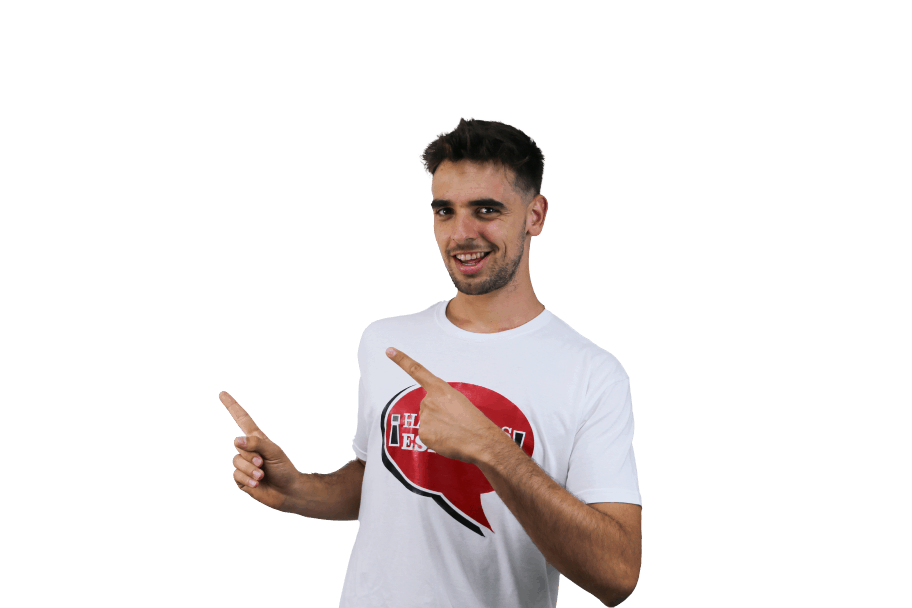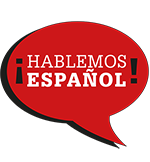The 24 Most Common Reflexive Verbs in Spanish - Part I
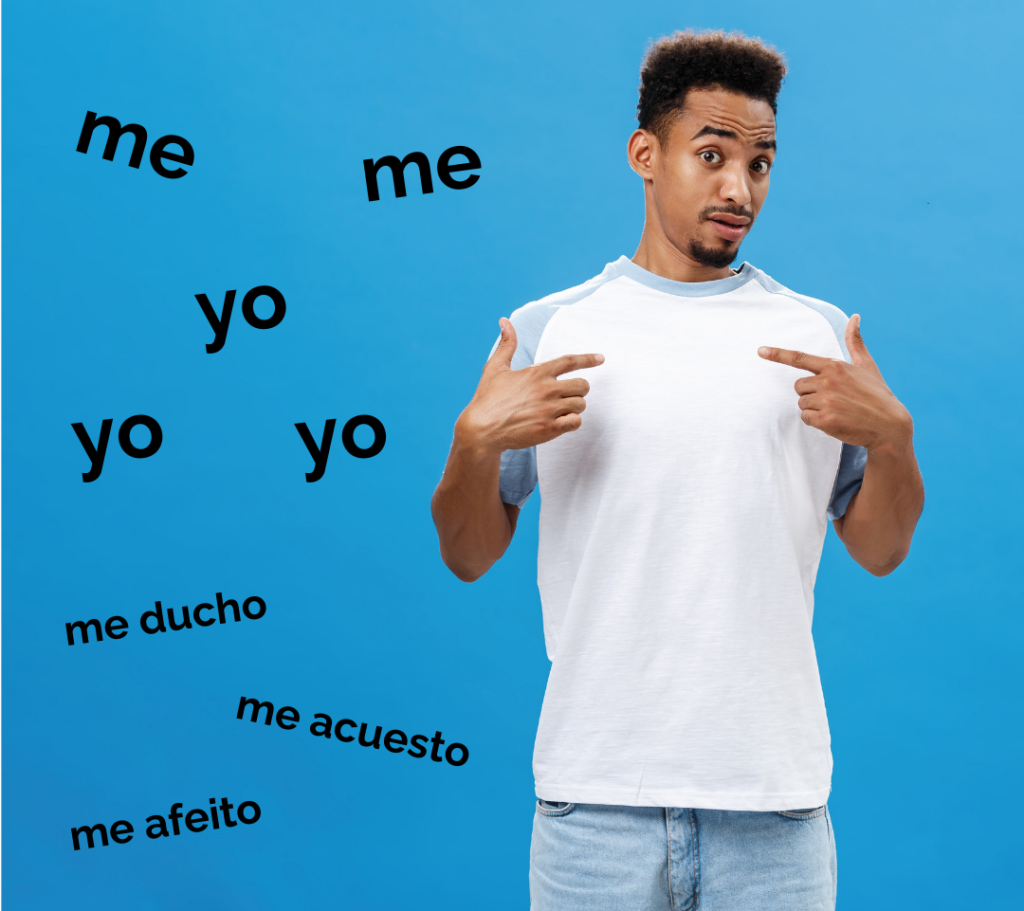
-
Save
Reflexive verbs are used daily in every Spanish-speaking country. Its correct use is an important step to reach fluency in Spanish. Would you like to learn how to use them properly? Would you like to know which are the 24 most common ones? Then this post is perfect for you!
In this post you'll find:
- The 24 most common reflexive verbs in Spanish,
- 24 illustrated flash cards,
- essential grammar with lots of examples,
- many practical exercises.
What is a reflexive verb?
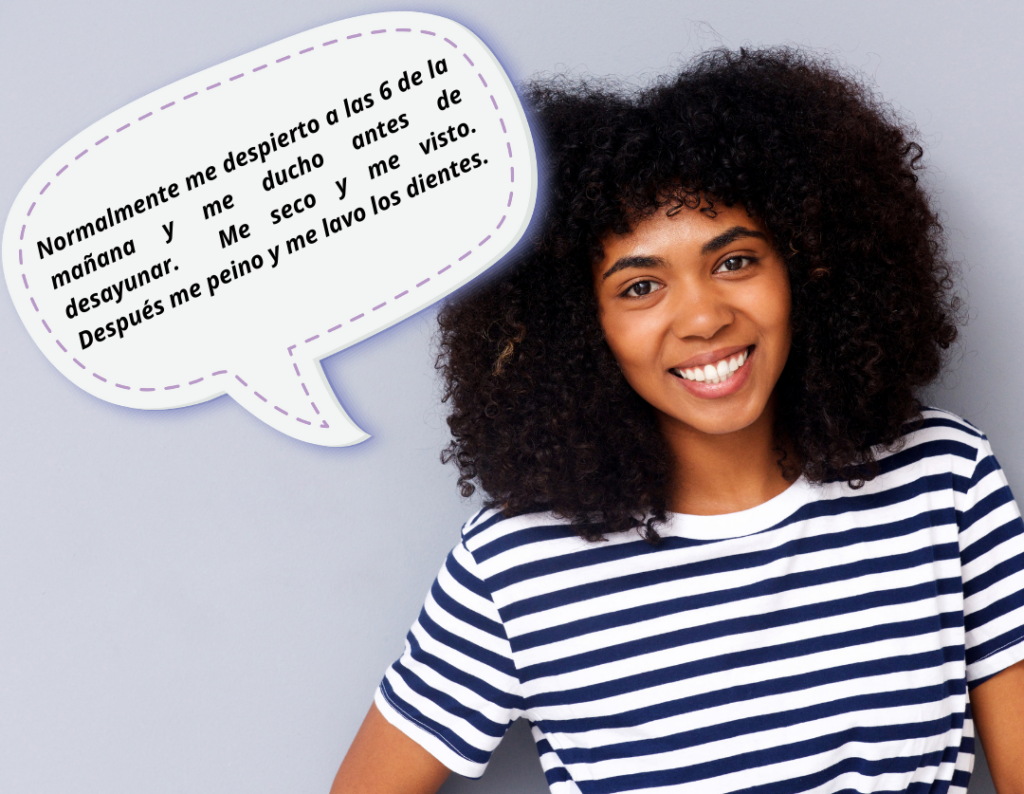
-
Save
Reflexive verbs are those with an extra pronoun: me, te, se, nos, os, les which agrees with the subject.
For example:
yo camino (non reflexive)
yo me ducho (reflexive)
Reflexive pronouns are mandatory with these kinds of verbs. Personal pronouns are correct, but not needed:
Yo me peino. = Me peino.
Which are the reflexive pronouns?
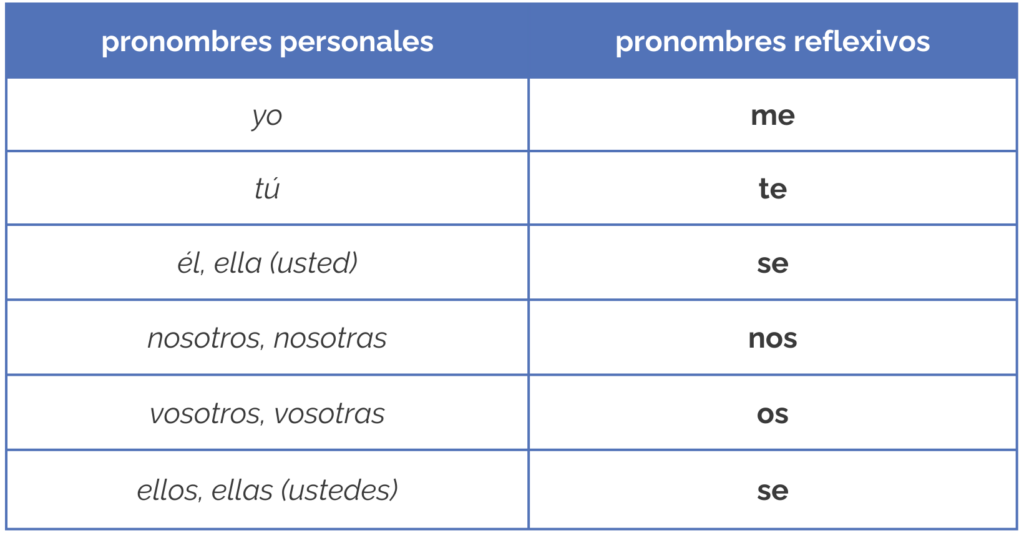
-
Save
How do you identify a reflexive verb?
We can tell that a verb is reflexive by looking at the infinitive form. Reflexive verbs include the reflexive pronoun -se. For example: DUCHARSE, VESTIRSE, LEVANTARSE…
Reflexive verbs are conjugated like any other verb, you just need to add the right reflexive pronoun before the conjugated verb.
yo + BAÑARSE: yo me baño
nosotras + VESTIRSE: nosotras nos vestimos
Have a look at the reflexive verb DUCHARSE:
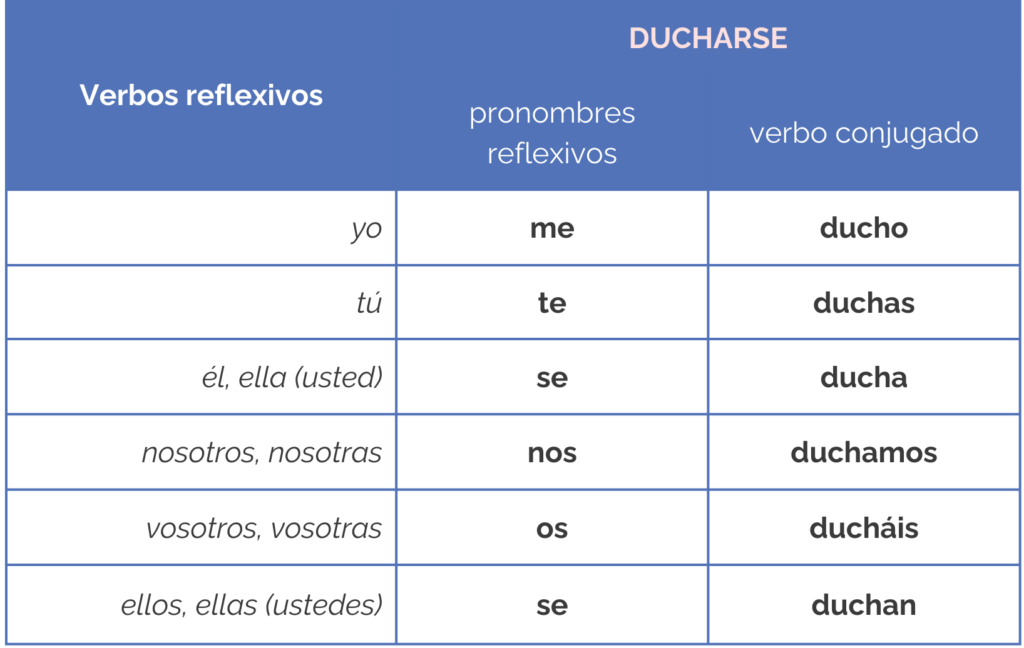
-
Save
Let’s practise!
The 24 most common reflexive verbs in Spanish
There are plenty of reflexive verbs when we talk about our daily routine in Spanish. Here you have the 24 most common reflexive verbs to use on a daily basis.
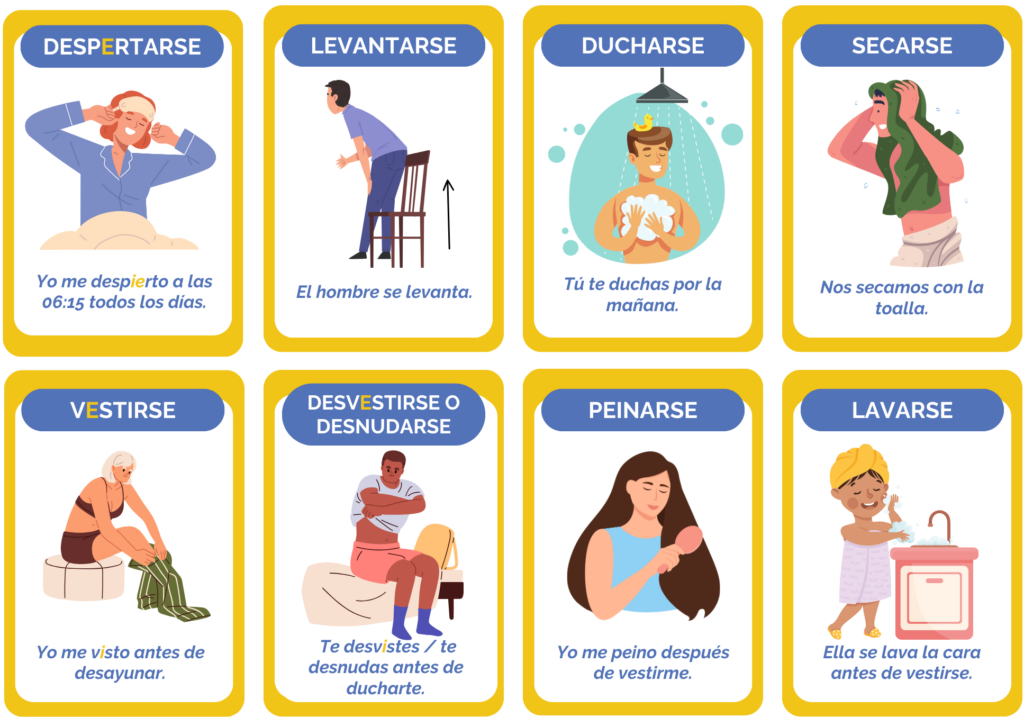
-
Save

-
Save

-
Save
The best way to learn these new verbs is practising. Here you have two fun exercises to revise the new vocabulary. Let’s start!
Reflexive or non reflexive? That’s the question
Why do we need these extra pronouns? Is there really a difference if we don’t use them? The answer to both questions is YES. Reflexive verbs are those in which the subject does something to themselves. For example: yo me visto means that I put on clothes on my own body, no one else does it and I’m not doing it to somebody else. I do it to myself. Look the following examples:
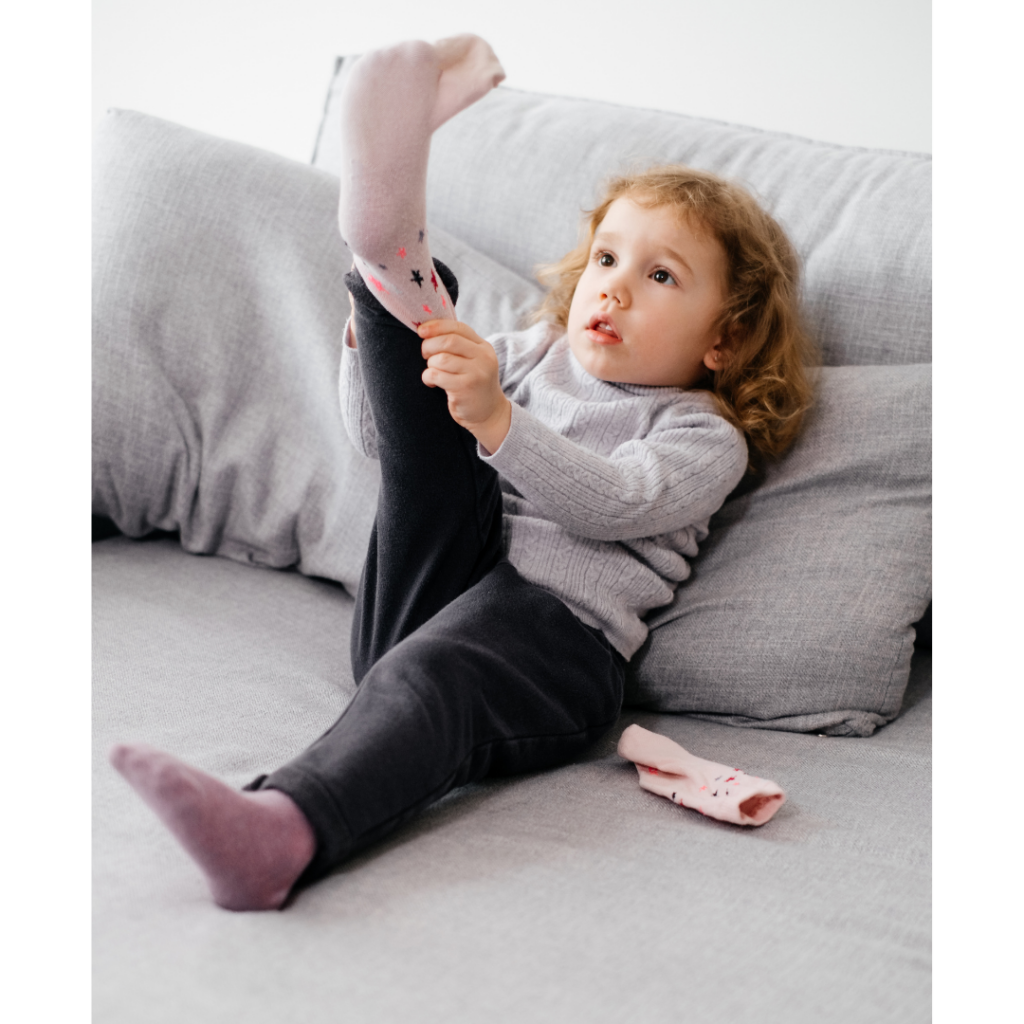
-
Save
La niña se pone los calcetines. (reflexive)
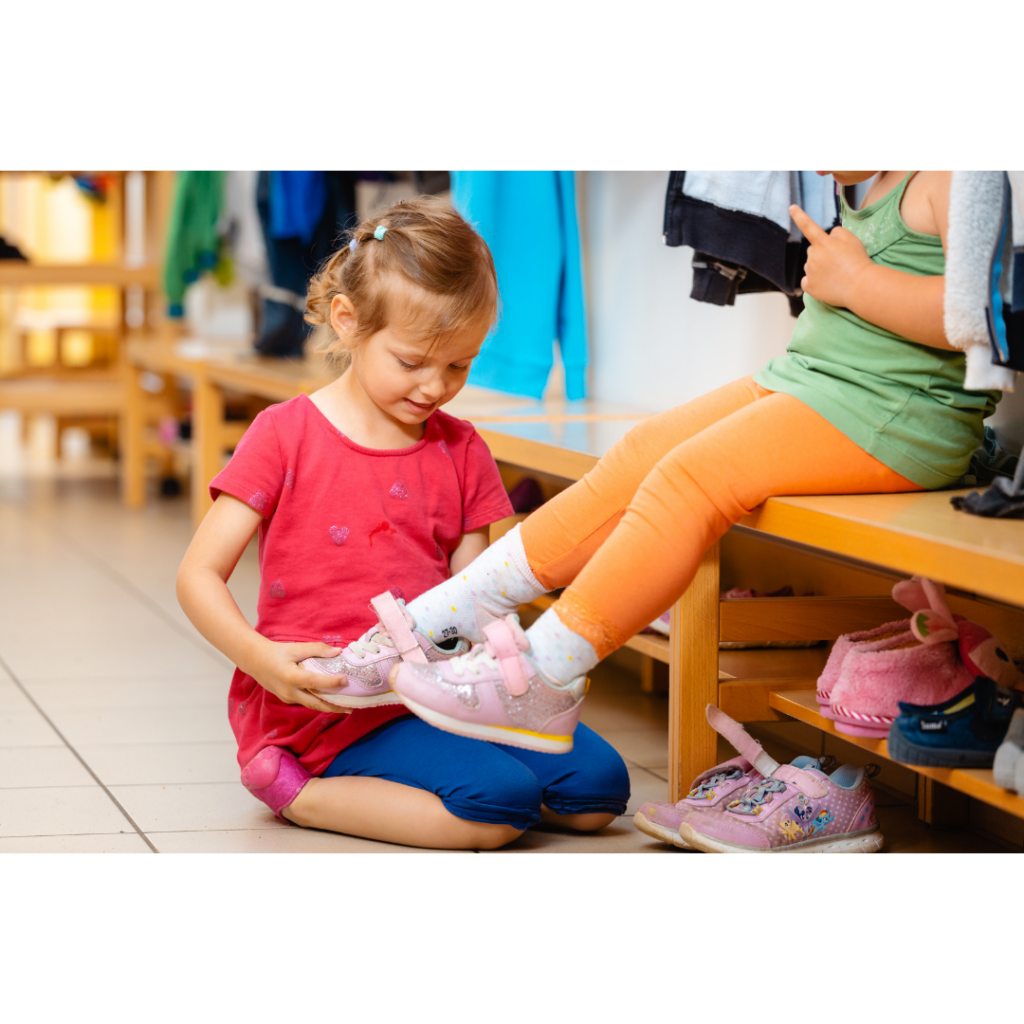
-
Save
La niña pone los zapatos a su amiga. (non reflexive)
The best way to learn this is with lots of practice. Let’s do it!

-
Save
Would You like to Take Your Spanish to the Next Level?
Whether you’re a complete beginner or you’re an advanced student, with us you’ll reach the next level of Spanish quickly and easily. With 24 Levels to Spanish fluency, the next level is always close by, so you will never lose motivation.
You can choose between:
In both cases, you’ll learn Spanish using our successful 24 Level System to Spanish Fluency® and our unique Spanish teaching methods.
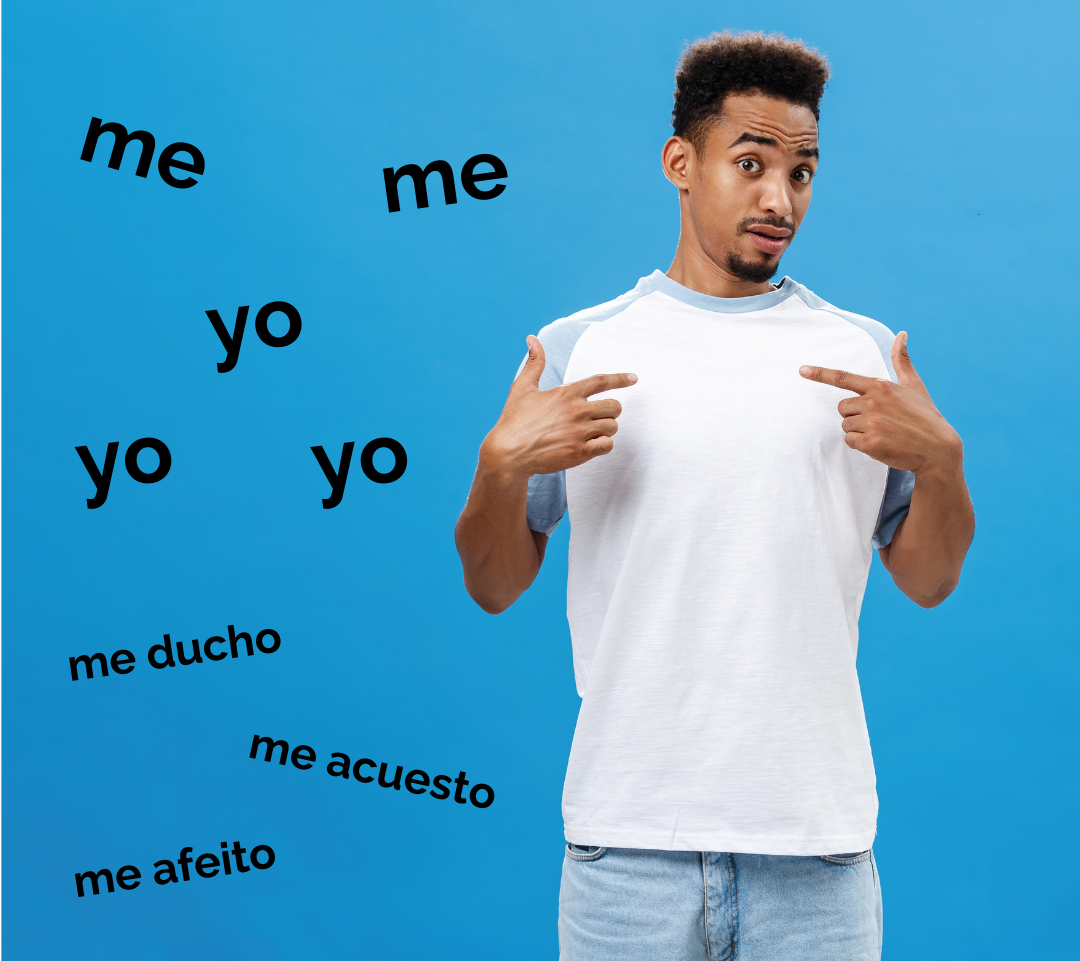
-
Save

